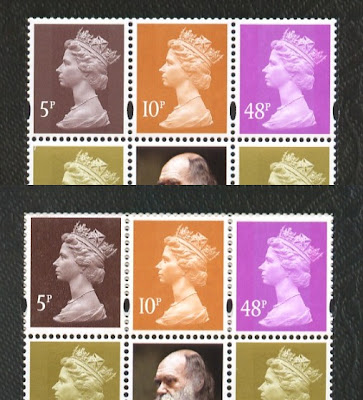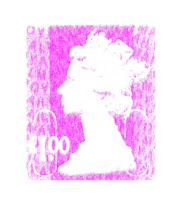I think most collectors of GB stamps know that when Royal Mail announce the programme for a year, it is only half (or less!) of the story. There are often retail booklets, Smilers Sheets, and the now infamous 'subjects that didn't make it into the stamp programme' for 2008 which turned out to be Commemorative Sheets similar to Business Smilers Sheets, sold at more than twice face value.
Well 2009 is no exception, and we can now announce some of the additions to the 2009 programme. If you are a 'one of everything collector' I hope you've got a lot of money!
Castles Smilers Sheets. In addition to Northern Ireland on St Patrick's Day (17 March), the sheets for England and Scotland will be issued on their respective saints' days 23 April and 30 November. I assume that means we can expect the Welsh Castles on 1 March 2010, although that's not mentioned officially in the outline programme (see below). The England sheet uses the 1st class flag stamp from the Celebrating England MS, but self-adhesive.
As expected there will be another set of Smilers For Kids, being 4 packs containing 10 stamps each, and 4 generic Smilers Sheets of 20 stamps. Subjects to be announced - see 2008 for possibles.
A new retail book will be issued on 21 May. Containing 4 1st class gold Machins and two stamps from the 1997 Greetings issue (Iris Iatifolia and Tulipa - originally SG 1958 & 1962) now in self-adhesive die cut form. This booklet marks the 50th anniversary of the National Association of Flower Arrangement Societies and is, as far as we can recall, only the second commemorative booklet, the first being the 2001 booklet which marked the centenary of the death of Queen Victoria.
The 31 March definitives for new postage rates include the 22p in a colour described by Royal Mail as 'stone'. The picture in their Philatelic Bulletin shows it to be dark brown. The others are 17p olive-green, 62p red, and 90p blue. New country stamps will also be issued.
Later in the year three Generic Smilers Sheets, similar to that issued for Beijing Olympic Expo, will be issued on Royal Mail's participation in various International Stamp Exhibitions, in Thailand, Italy and Monaco. There will also be two Commemorative Sheets similar to the Territorial Army sheet issued last year.
One other Smilers Sheet is possible in the summer.
Finally, the devices known universally as Faststamps but which Royal Mail have dubbed Post and Go Stamps (ie those with the Machin head on), are to be issued in packs of 5 values from Royal Mail's Philatelic Bureau in Edinburgh. The branch code on these stamps is said to be that for Bristol, but the value, etc, on the labels will be printed in gravure, by Walsall, who also print the base stamps. Thus these 5, which will be separate, not in the desired se-tenant strips, will be detectably different to those obtained from machines.
-----------
Wambrook climax rubber cancels, 1911 & 1922
-
Wambrook had three different climax rubber cancels; below are examples of
the first (from 1911) and the third (from 1922). A second cancel is known
used...





















